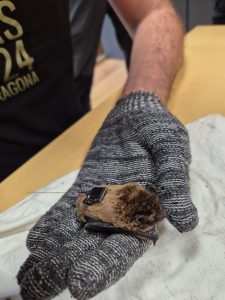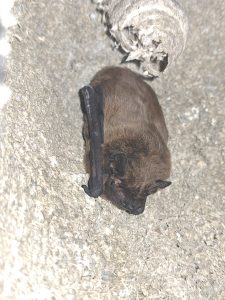For the first time, a specimen of the lesser noctule – a native bat species widespread across much of the Italian peninsula – has been fitted with a GPS tracker to monitor its movements. The experiment, the result of collaboration between the National Research Council’s Institute of Research on Terrestrial Ecosystems (CNR-IRET), the Oasi Dynamo in Limestre (Pistoia), and the Max Planck Institute, is part of a study aimed at identifying the routes and movements of migratory bats in order to support targeted conservation strategies for these species.
From Pistoia to the outskirts of Florence and on to Empoli and surrounding urban areas: these are the main routes travelled by the first Italian bat equipped with a GPS tracker, a specimen of Nyctalus leisleri, commonly known as the lesser noctule or Leisler’s bat. Researchers from the CNR’s Institute of Research on Terrestrial Ecosystems (CNR-IRET) reconstructed the animal’s journey in collaboration with Germany’s Max Planck Institute and Oasi Dynamo, a WWF-managed area in the Pistoia Apennines. Spanning over 1,000 hectares in the municipality of San Marcello Piteglio, the area is home to rare plants, wolves, deer, and many other species, and is considered a national model of environmental sustainability and social responsibility.

“The reference area,” explain CNR-IRET researchers Leonardo Ancillotto and Emiliano Mori, “is frequently visited by Leisler’s bats as well as at least six or seven other bat species. Like all bats in Italy, they are native mammals, and some can travel hundreds of kilometers during migration. They can reach Eastern European countries such as Poland or Russia. Generally, females tend to make the longest trips, but males can also be quite adventurous when it comes to movement.”
The specimen tracked in this study is a male found in one of the bat boxes installed in the Oasi. Nicknamed “Ugo” by the staff, he was fitted with an ultra-light GPS by the researchers. The tracking device – a small plate with an antenna and built-in GPS – was attached to the bat on May 6. “The system weighs about one gram,” says Ancillotto, “and is glued to the animal’s back using a surgical, non-toxic adhesive. The battery lasts between 40 and 60 days. After that, the glue naturally dries out, and the tag falls off. This method means we don’t have to recapture the bat to retrieve the device, reducing the animal’s stress.” The data is automatically collected and sent once or twice a day and can be downloaded by accessing a website and entering the GPS code provided by the Max Planck Institute. The information allows the research team to reconstruct the bat’s full journey.

“So far, we’ve tagged only one male,” adds Mori, “but we hope to collect more comprehensive datasets. In particular, we aim to track female bats next, as they travel further and would allow for a clearer picture of migratory routes. Ideally, to gain reliable insights into the species, we would need to tag at least 20 bats. In the fall, we plan to focus on this goal, thanks also to the invaluable collaboration of Edward Hurme, researcher at the Dechmann Lab of the Max Planck Institute of Animal Behavior, and Giulia Santalmasi and Matteo Bianchi from Oasi Dynamo. Still, we’ve been surprised by how much useful information even one bat can provide.”
Indeed, scientists report that the monitored bat travelled several dozen kilometers from the beech forest where it was tagged – at an altitude of around 1,000 meters – down to the plains, flying over Pistoia, the outskirts of Florence, and Empoli. “It was truly fascinating,” comments Ancillotto, “and we’re pleased to have initiated a new monitoring protocol in Italy, one that could provide useful information for the scientific community and for the conservation of these animals.” The initiative is part of a broader project to monitor migratory species (“ICARUS Bats”), with the aim of studying their ecology, behavior, and movements across various European countries.

“Identifying migration patterns,” the scientists conclude, “is essential for understanding how foraging areas and movements are affected by factors such as climate change and urban threats. This data will help us define the best strategies to protect these species. Bats are also excellent indicators of forest management practices, making them essential for developing effective biodiversity conservation guidelines.”

